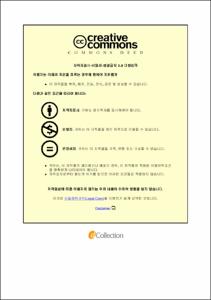압전 진동자의 형상 가공에 의한 초음파 트랜스듀서의 특성 제어
- Alternative Title
- Characteristic Control of Ultrasonic Transducer by Shaping of Piezoelectric Ceramic Vibrator
- Abstract
- Ultrasonic transducers using piezoelectric vibrator are used in many fields such as medical diagnosis, non-destructive testing, and underwater object detection. These transducers are required to control acoustic characteristics such as frequency bandwidth and acoustic radiation directivity for the using purposes. In order to obtain the purposed characteristics of the transducer, a method of selecting an appropriate backing layer and a matching layer is generally used. As the other methods, a composite type piezoelectric vibrator, a multilayered piezoelectric vibrator, and a graded piezoelectric vibrator have been suggested. In this study, we propose a method to control the characteristics of the ultrasonic transducer by shaping of a piezoelectric vibrator, which is an element of the transducer. In order to examine the characteristic changes according to the shape, a one-sided fabricated piezoelectric vibrator, which has a same diameter of 5.25 mm, was designed with the various shapes of the radiation surface such as a cone type, a convex type, and a concave type, and the thickness were in the range from 0.98 mm to 3.0 mm. For the theoretical analysis of the piezoelectric vibrator with nonuniform thickness, the vibrator was assumed the sum of the cylindrical piezoelectric vibrating elements. The height change of a vibrator is derived as the function of radius, and the function is used to calculate the total input admittance of the vibrator. In the calculation of the vibrating element, the Mason’s model was adopted. In order to verify the effectiveness of the proposed theoretical model, an ultrasonic transducer was fabricated with the piezoelectric vibrators of nonuniform thickness and the resonance and radiation characteristics were experimentally examined. The input admittance of the piezoelectric vibrator, which had been processed using a CNC milling machine in accordance with the theoretical design, was measured. As the result, the multiple resonance modes were distributed in the frequency range corresponding to the thickness change, as the similar results of the theoretical one. The transfer functions depending on the surface position of the vibrator were calculated and applied as the distribution of the source strength because the source strength at the specific driving frequency is not uniform over the surface in a piezoelectric vibrator with nonuniform thickness. As the results of calculating the acoustic fields by applying the distribution of the source strength, the cone type and the convex type piezoelectric vibrators had broad directivity, unlike the planar type, although the driving frequency was relatively high. These results showed good agreement with the experimental ones. To examine the dependence of the acoustic field on the driving frequency, the acoustic fields of the concave type piezoelectric vibrator were calculated for the different driving frequencies. As the results, it can be confirmed that the acoustic fields are converged in the both results of calculation and measurement, as the peak of the source strength distribution moves to the central axis when the driving frequency increases. Therefore, it is confirmed that the acoustic field calculation method using the transfer function distribution suggested in this study is effective. In order to evaluate the fabricated ultrasonic transducers, we measured the impulse response in water to derive the electro-acoustic conversion efficiency from the received amplitude. To give a ground of comparison, an ultrasonic transducer was fabricated using a planar type piezoelectric vibrator with the thickness of 1.5 mm. The conversion efficiency of the concave type transducer in focus region was measured to be about 2.5 times greater than that of the planar type transducer, and the conversion efficiency in far field area was similar to that of the planar type. The transfer function in focus region of each transducers was obtained by Fast Fourier Transform of the received waveform measured by the impulse response. The -6dB bandwidth of the transducers with nonuniform thickness was measured about 71 ~ 74%, and it was 21 ~ 24% larger than that of the planar type transducer. Also, to confirm the validity of the design, the input admittance were simulated by a numerical method, and the analyzed results are in good agreement with the measured results. The suggested ultrasonic transducer fabricated by shaping of a piezoelectric vibrator in this study could be expected to be applicable not only in the field of medical diagnosis but also in many ultrasonic industries such as non-destructive testing and underwater object detection.
- Issued Date
- 2019
- Awarded Date
- 2019. 2
- Type
- Dissertation
- Publisher
- 부경대학교
- Alternative Author(s)
- Soohyun Lim
- Affiliation
- 부경대학교 대학원
- Department
- 대학원 물리학과
- Advisor
- 김무준
- Table Of Contents
- 1.1. 서론 1
2. 불균일한 두께를 갖는 압전 진동자의 등가회로 해석 4
2.1. Mason 등가회로를 통한 입력 어드미턴스 계산 4
2.2. 전달함수 계산 10
2.3. 음장 해석 13
3. 형상에 따른 압전 진동자의 특성 해석 15
3.1. 압전 진동자의 형상 설계 15
3.2. 어드미턴스 특성 변화 19
3.3. 음장 특성 변화 24
4. 트랜스듀서의 제작 및 특성 확인 33
4.1. 트랜스듀서의 설계 및 제작 33
4.1.1. 가공 조건에 따른 압전 진동자의 특성 변화 33
4.1.2. 압전 진동자의 가공 설계 39
4.1.3. 압전 진동자의 형상 가공 조건 40
4.1.4. 트랜스듀서의 구조 및 제작 43
4.2. 트랜스듀서의 특성 측정 45
4.2.1. 어드미턴스 특성 45
4.2.2. 전달함수 특성 50
4.2.3. 음장 특성 63
4.3. 유한 요소법을 이용한 유효성 확인 70
4.3.1. 해석 모델 70
4.3.2. 음향 특성 72
5. 결론 75
참고문헌 77
부록 80
- Degree
- Master
- Files in This Item:
-
-
Download
 압전 진동자의 형상 가공에 의한 초음파 트랜스듀서의 특성 제어.pdf
기타 데이터 / 1.72 MB / Adobe PDF
압전 진동자의 형상 가공에 의한 초음파 트랜스듀서의 특성 제어.pdf
기타 데이터 / 1.72 MB / Adobe PDF
-
Items in Repository are protected by copyright, with all rights reserved, unless otherwise indicated.